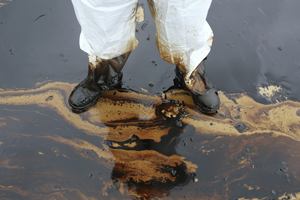Climate Adaptation – Chemical Exposure and Health

More frequent and intense storms may increase the likelihood of flooding, causing chemicals held in underground storage tanks, landfills, and storm debris to leak or spread to previously unsoiled areas. The melting of permafrost in Alaska may release previously frozen chemicals.
People who are exposed to these chemicals may experience adverse health effects, such as:
- Respiratory system
- Cardiovascular system
- Renal system
- Nervous system
- Immune system
- Reproductive system
- Skin
- Hepatic system
Children are more susceptible to chemical exposure because they eat, breathe, and drink more relative to their body mass than adults do. Adults with compromised immune systems and pre-existing health conditions may also be more vulnerable to chemical exposures.
